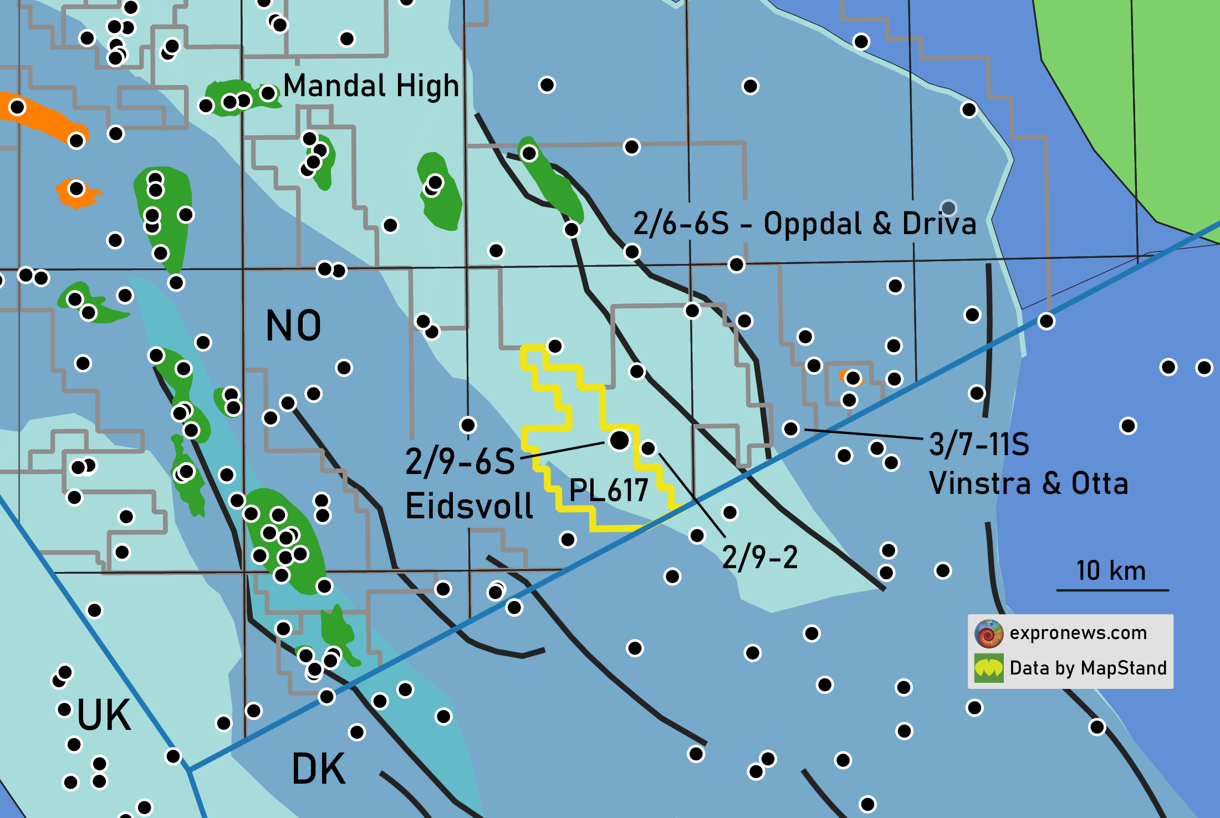In a third attempt to prove prospectivity in the Mandal High area, Mol has now spudded well 2/9-6S in PL617, on the western side of the Mandal High. Partnered by Wintershall Dea (30%) and OMV (30%), the well targets Upper Jurassic sands of the Eidsvoll prospect.
Oil migration likely
Migris, the company that describes and reduces geological and economical exploration risk by simulating geological processes, predicts that the Upper Jurassic sands – if present – are highly likely to have experienced oil migration (99% probability).
This is not a major surprise as hydrocarbon migration has likely taken place – and potentially it still is – from the deeply buried kitchen area of the Central Graben to the immediate west.
Instead, the previous two wells drilled by Mol and partners were situated on the eastern side of the Mandal High and were always riskier in terms of hydrocarbon migration. However, given the success of Johan Sverdrup, with oil found in places where people previously didn’t anticipate it to be, there was a strong incentive to try and test geological analogues in the same basin.
No migration
With that in mind, Mol and partners drilled 2/6-6S in 2018/2019 (see cross-section below). The well targeted reservoir rocks in the Paleocene Intra Våle Formation sandstones (Oppdal prospect) and in the Permian Rotliegend Group (Driva prospect). The well encountered an approximately 34 m thick sandstone in the Intra Våle Formation with good reservoir quality. In the Rotliegend Group, the well encountered 105 m of relatively tight sandstone. However, both reservoir units turned out dry.

A flat spot, but no reservoir
The second well also disappointed. 3/7-11S had both a Rotliegend (Vinstra) and a Middle Jurassic target (Otta). Vinstra was mapped as a huge 4-way dip closure (ca 400 square km) at Rotliegend level, where even a flat spot could be seen on seismic. On that basis, and the fact that the closure was thought to contain more than 1 billion barrels, expectations were high. Although the well drilled into Permian rocks, reservoir sands were missing and the well was classified as dry. The Middle Jurassic reservoir was present but turned out tight and fairly thin.
Reservoir presence key
Back to the 2/9-6S well, where we have seen that migration is probably not the main risk. For this well, the presence of reservoir might be trickier, as neighbouring well 2/9-2 drilled in 1979 by Amoco suggests. This well also targeted Upper Jurassic sandstones on the flank of the Mandal High, but although a 640 m thick interval of Upper Jurassic rocks was drilled, it consisted mostly of black shales. It is hoped that better seismic data has further de-risked the prospect currently drilled when it comes to sand presence.
We will see at some point in the next few months.
HENK KOMBRINK
Note to readers: You may have noticed that this article is a bit of an anomaly given that I published a wrap-up article on Friday for the past few months. However, as expronews is now also on Twitter since the start of the year, we will tweet and share interesting subsurface-related news in this way from now on. Please visit the page and give us a follow!




